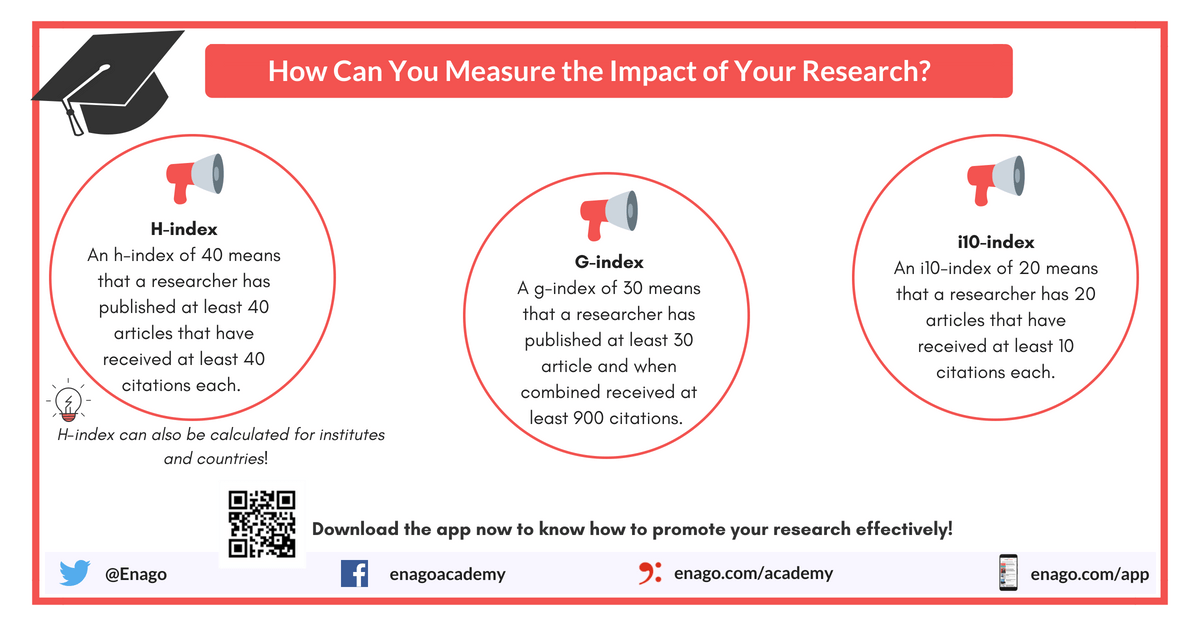Understanding Research Metrics: Journal-Level, Article-Level, and Author-Level

The word metrics means “measurement.” In the academic publishing industry, we measure the impact of published research based on various metrics. For example, we look at how many times a paper is cited by subject or author and how many times a specific article in a journal is cited to assess the importance of the journal and its impact on the field of study. In this article, we look at three metrics: journal-level, article-level, and author-level. Each of these has a specific impact. It is helpful to familiarize yourself with each to help you reach your research goals.
Journal-Level Metrics
Journal-level metrics are used to determine the impact a journal has on the scientific community.
- Impact Factor: This metric has been used most frequently. It is the average number of citations of an article, a proceeding, or a review published in a journal in the last two years. It is published in Journal Citation Reports (JCR). This metric is published on an annual basis and can be often found on the websites of the journals. Similarly, 5-year IF is also measured to assess the journal metrics.
There are additional measures that consider citation-level metrics as follows:
- Eigenfactor: Eigenfactor gives higher weightage citations from influential journals and does not consider self-citations. It is based on the average citations in a JCR year to papers published in the last 5 years. It is also published in JCR and sources its data from Web of Science.
- SCImago Journal Rank (SJR): Similar to Eigenfactor, SJR gives greater weightage to citations from influential journals. It is based on the average number of weighted citations in a year to that published in the last 3 years. It uses information from Scopus to produce country and journal-specific indicators. SJR is published in SCImago journal and country rank reports.
- Source Normalized Impact per Paper (SNIP): It is based on the weighted citations in a year to papers published in the last three years. Published in CWTS Journal Indicators, the data for this indicator is sourced from Scopus. It also corrects the differences in citation practices in different disciplines, making it easier to compare this metric across various fields.
- CiteScore: A new metric by Scopus, it includes eight complementary indicators such as CiteScore Tracker, CiteScore Percentile, Citation Count, and more.
- h5 Index: This metric counts the number of articles (h) published in the past five years that have a minimum of h citations. It is available through Google Scholar.
- Immediacy Index: It is the average number of article citations in the first of publication. It helps to assess how quickly these papers are cited. It is published annually in JCR. It also sources its data from Web of Science.
Article-Level Metrics (ALMs)
Article-level metrics (ALMs) are used to quantify the impact of published articles-how published papers are being discussed and shared. The ALM process uses various sources of information. Some are listed here.
- Altmetrics: Altmetrics is an alternative to the traditional citation metrics. They can include (but are not limited to) peer reviews, citations on Wikipedia and in public policy documents, discussions on research blogs, media coverage, bookmarks on reference managers like Mendeley, and mentions on social networks such as Twitter. Therefore, the data for calculating Altmetrics is sourced from the web and can give an insight into the research output activity across various platforms as soon as the article is published.
- Article-level metrics: PLOS article-level metric allows to measure the impact of your research before it starts receiving citations. It measures both academic and social metrics to display the level of engagement from both scientific community and public. It is usually displayed along with individual journal article. In addition, Scopus, the largest abstract and citation database comprising of more than 21,000 journals, has incorporated ALMs into its indices and has partnered with altmetrics to provide even more datasets. Nature Publishing Group (NPG) has also incorporated ALMs into its metric system of evaluating the impact of an article. Similarly, BioMed Central has also incorporated altmetrics into their database.

Author-Level Metrics
Author-level metrics provide an assessment of the impact that an author makes on the scientific community or field of the study.
- h-index: It quantifies an individual’s scientific research output. It indicates the number of articles (h) that have been cited least (h) number of times. This can be applied to any type of datasets apart from research articles.
- g-index: For calculating g-index, articles are ranked in a decreasing order of the number of citations. It indicates the largest number such that the top g articles received at least g² citations.
Google Scholar is a good source for an author’s h-index and citation counts. Scopus also provides charts and graphs of an author’s h-factor and number of citations.
These metrics are not exhaustive and one should consider all factors to measure the impact of the research. What research metrics do you commonly use when making your decisions? Share your thoughts in the comments section!










I have got good information from this report